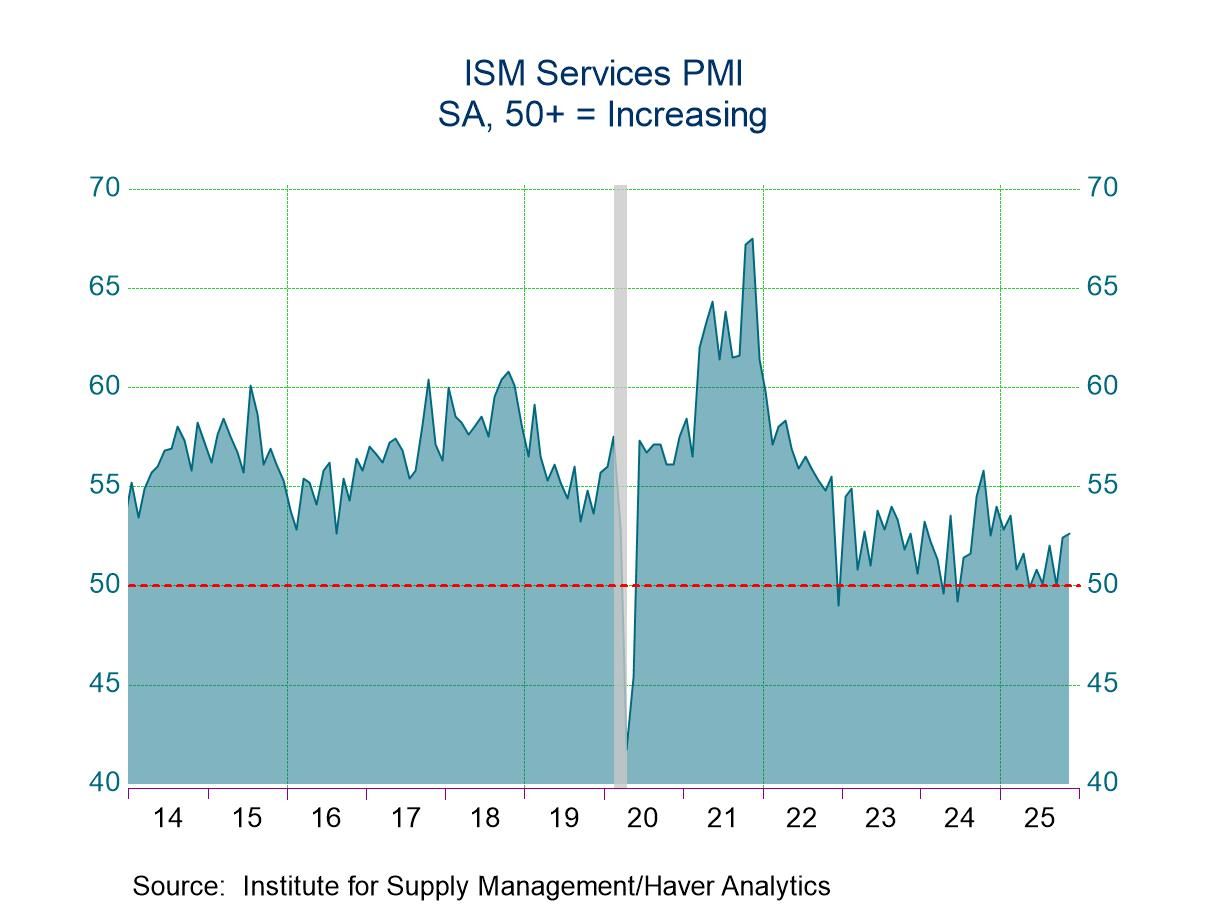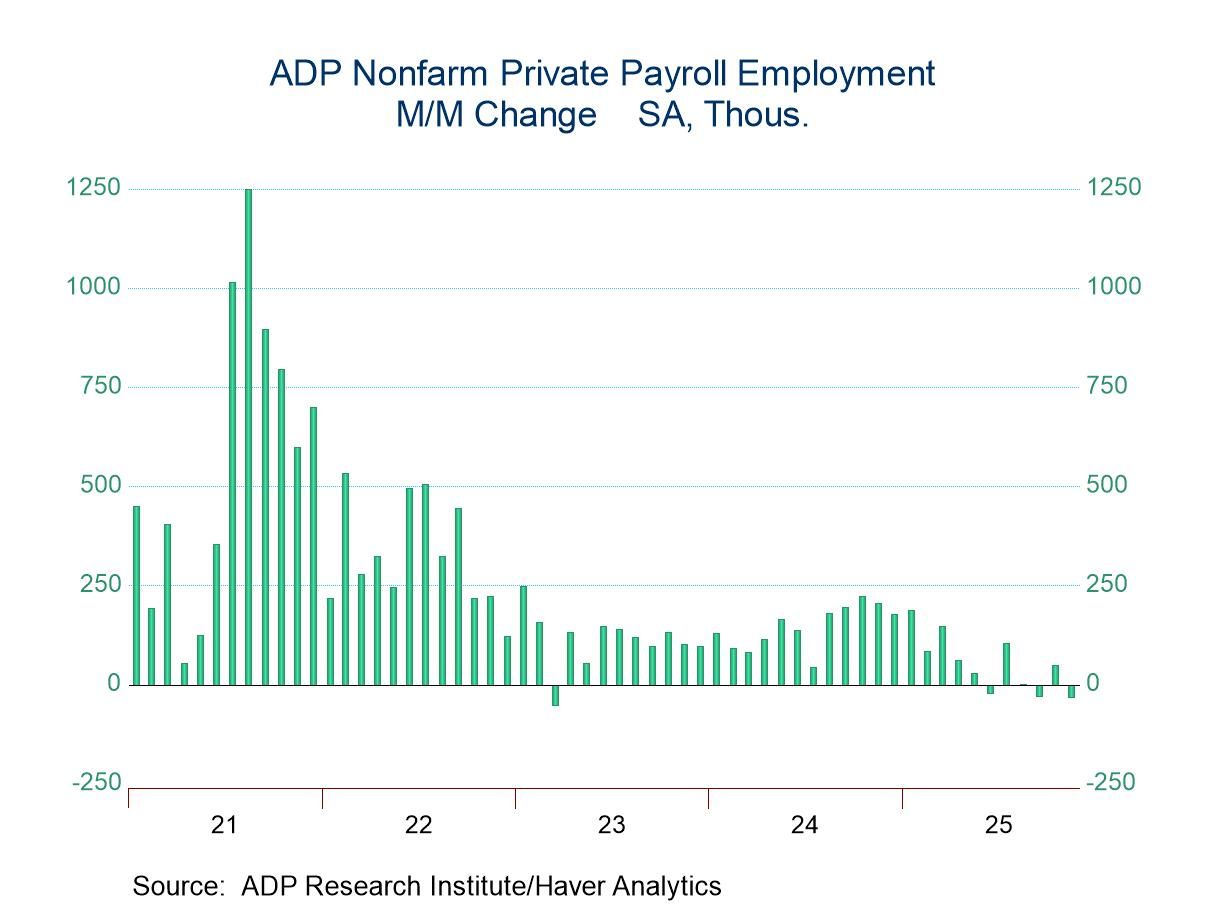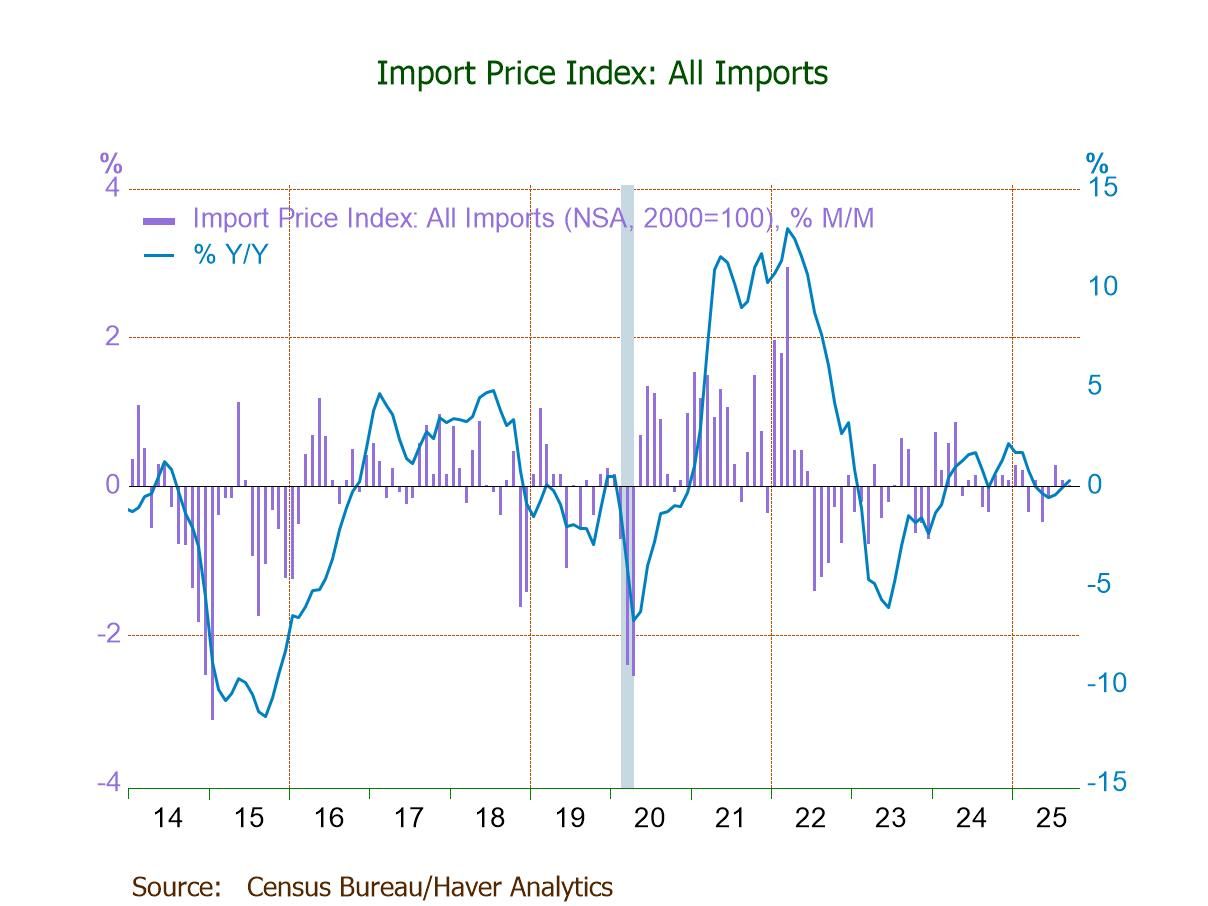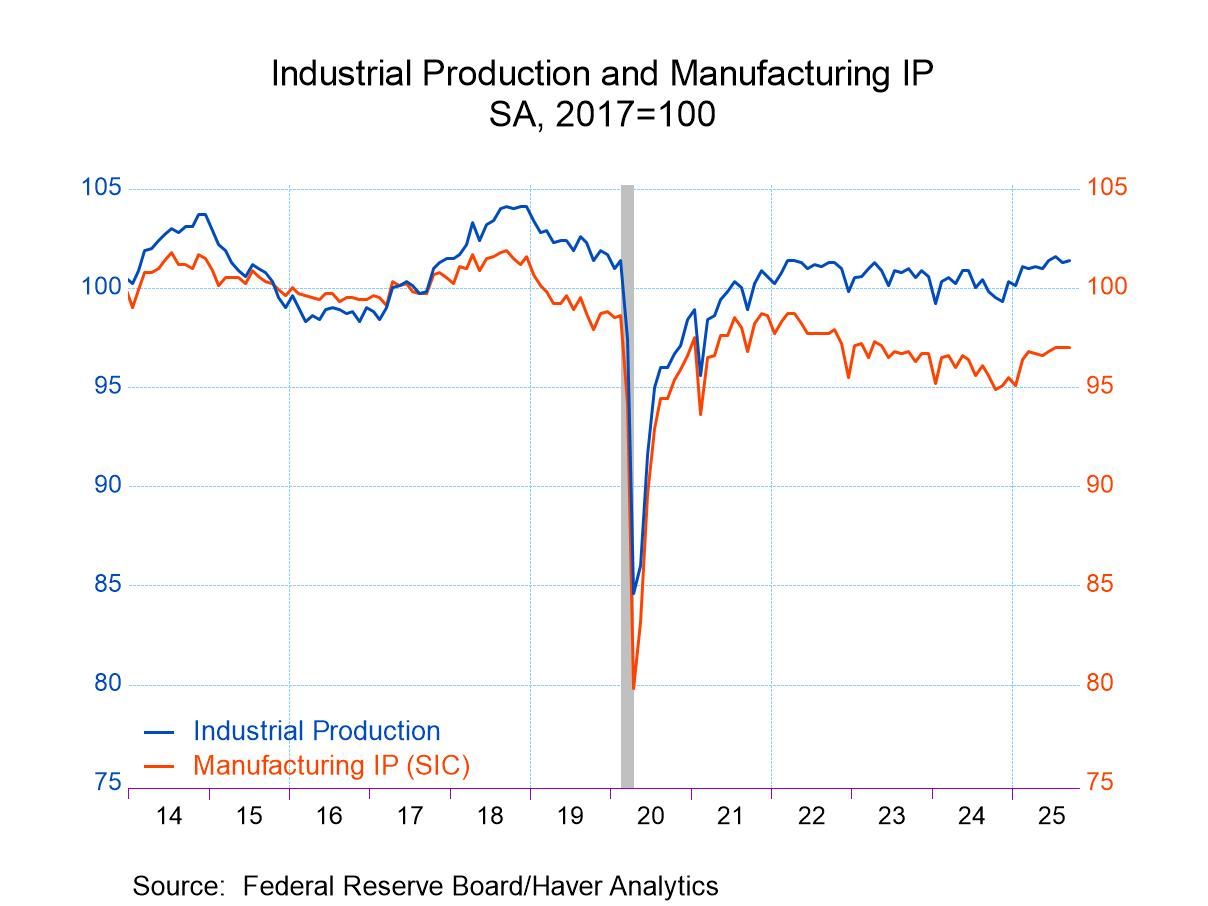U.S. Durable Goods Orders Fall Sharply in October
by:Tom Moeller
|in:Economy in Brief
Summary
- Aircraft orders plunge; orders outside transportation hold steady.
- Both durable & nondurable shipments slide.
- Order backlogs & inventories increase.


New orders for durable goods weakened 5.4% (+0.3% y/y) during October after rising 4.0% in September, revised from 4.7%. A 3.5% decline had been expected in the Action Economics Forecast Survey.
Transportation equipment orders fell 14.8% during October (-1.6% y/y) after rising 11.6% in September. Fewer orders for nondefense aircraft & parts lowered the total with a 49.6% decline, and motor vehicle & parts orders fell 3.8% last month (-2.2% y/y) after weakening 2.5% in September.
Durable goods orders excluding transportation held steady (1.3% y/y) in October after improving 0.2% in September. Orders for electrical equipment & appliances eased 0.1% (+4.8% y/y) after falling 0.9% in September while orders for computers & electronic products improved 0.3% (4.0% y/y) after a 0.8% September gain. Machinery orders held steady (-0.3% y/y) after rising 0.1%. Primary metals orders declined 0.5% (-0.6% y/y) after falling in each of the prior three months, while fabricated metals orders rose 0.4% (3.5% y/y) after a 0.9% rise. Defense product orders surged 18.7% in October (20.0% y/y) following an 11.6% September decline.
Nondefense capital goods orders were down 15.6% last month (-2.2% y/y) after rising 17.7% in September. Excluding aircraft, orders slipped 0.1% (+0.6% y/y) following declines in three of the prior four months.
Shipments of all manufactured goods fell 1.4% (-1.6% y/y) in October following no change in September. Nondurable goods shipments slumped 1.9% in October (-4.2% y/y) after rising 0.6% in September. Shipments of durable goods declined 0.9% (+1.3% y/y) following declines in two of the prior three months. Transportation shipments declined 2.3% (+2.0% y/y), about as they did in September, while excluding transportation, durable goods shipments eased 0.2% (+0.9% y/y) following little change in September.
Inventories of all manufacturing industries rose 0.1% (-0.3% y/y), the same as in September. Inventories of durable goods rose 0.3% (1.1% y/y) after negligible increases in both of the prior two months. Excluding transportation, inventories rose 0.1% (0.7% y/y) following no change in September. Inventories of nondurable goods fell 0.2% (-2.4% y/y) after rising 0.2% in September.
Unfilled orders of durable goods increased 0.3% (7.1% y/y) in October after rising 1.3% in September. Transportation sector backlogs rose 0.4% (12.2% y/y) after a 2.1% September rise. Excluding transportation, durable goods order backlogs rose 0.1% (-0.7% y/y) after holding steady in September.
Manufacturers’ orders and shipments of durable goods, as well as nondurable goods, are compiled by the U.S. Census Bureau; they are available in Haver’s USECON database. Unfilled orders and inventories are also included. The Action Economics forecast data are in the AS1REPNA database.


Tom Moeller
AuthorMore in Author Profile »Prior to joining Haver Analytics in 2000, Mr. Moeller worked as the Economist at Chancellor Capital Management from 1985 to 1999. There, he developed comprehensive economic forecasts and interpreted economic data for equity and fixed income portfolio managers. Also at Chancellor, Mr. Moeller worked as an equity analyst and was responsible for researching and rating companies in the economically sensitive automobile and housing industries for investment in Chancellor’s equity portfolio. Prior to joining Chancellor, Mr. Moeller was an Economist at Citibank from 1979 to 1984. He also analyzed pricing behavior in the metals industry for the Council on Wage and Price Stability in Washington, D.C. In 1999, Mr. Moeller received the award for most accurate forecast from the Forecasters' Club of New York. From 1990 to 1992 he was President of the New York Association for Business Economists. Mr. Moeller earned an M.B.A. in Finance from Fordham University, where he graduated in 1987. He holds a Bachelor of Arts in Economics from George Washington University.






